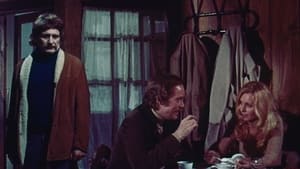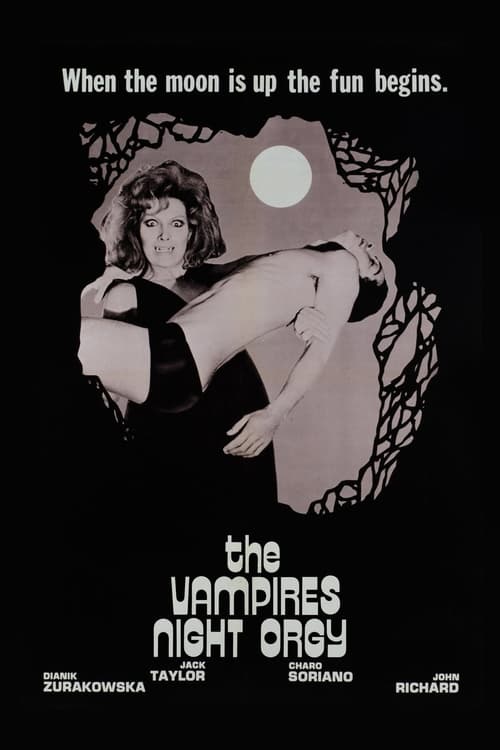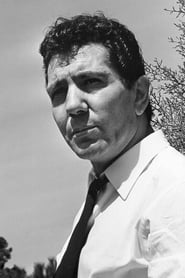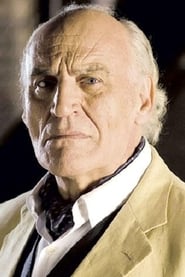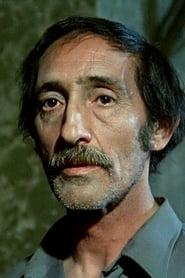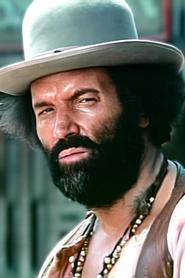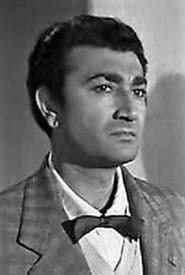Cast
Dyanik Zurakowska
Alma
Helga Liné
The Countess
Jack Taylor
Luis
José Guardiola
Boris, the Major
Charo Soriano
Raquel
Manuel de Blas
Marcos
David Aller
César
Luis Ciges
Godó
Gaspar 'Indio' González
Ernesto
Fernando Bilbao
The Giant
Antonio Páramo
Gendarme
Alfonso de la Vega
Herrero
Rafael Albaicín
Afilador
L. Villena
Conductor
María Vidal
Criada
Crew
Director
- León Klimovsky
Producer
- José Frade
Reviews
Wuchak
**_Strange, crumbling Village of…The Countess (Helga Liné)_**
A small bus of people traveling the stoney mountains northeast of Madrid is forced to bypass to a remote town, which turns out to be a death trap.
A Spanish production, “The Vampires Night Orgy” (1973) is Gothic-tinged Euro horror that borrowed its plot from “The Devil’s Nightmare” from two years prior, replacing the castle milieu with an old rural village similar to “Kill, Baby… Kill!” from seven years earlier. People who complain about the title perceive ‘orgy’ in a one-dimensional sense. Actually, an orgy is any actions or proceedings marked by unbridled indulgence of passions, such as an orgy of killing.
Redhead Helga Liné naturally stands out in the beauty department, but Dyanik Zurakowska (Alma) is also worth a mention. As usual with these types of flicks, there’s some nudity. Speaking of which, the guy who turns out to be the protagonist has no qualms with a little voyeurism (Jack Taylor).
While this is easily on par with “Kill, Baby… Kill!” it’s not as good as “The Devil’s Nightmare” because it lacks the seven deadly sins angle, not to mention the castle. However, the mountain village is awesome in its own way. If you like those two flicks and similar contemporaneous ones like “Messiah of Evil,” you’ll appreciate this.
It runs 1 hour, 25 minutes, and was filmed in the heart of Spain, with exteriors shot in the mountains about 25 miles northeast of Madrid in Patones de Arriba and Talamanca del Jarama.
GRADE: B-
Apr 27, 2024
Thematic Analysis
This Horror film explores themes of fear and survival, delving into the psychological aspects of human nature when confronted with the unknown. The Vampires' Night Orgy presents a unique perspective on the horror genre by focusing on the psychological terror rather than relying on typical jump scares.
Director León Klimovsky brings their distinctive visual style to this film, continuing their exploration of themes seen in their previous works while adding new elements. Their approach to pacing and visual storytelling creates a viewing experience that rewards close attention.
Released in 1973, the film exists within a cultural context that now offers viewers historical perspective on the social issues of that era. Its reception demonstrates the diverse reactions to its artistic choices and its place in cinema history.
Did You Know?
- The production of The Vampires' Night Orgy took approximately 18 months from pre-production to final cut.
- The final cut of the film runs for 80 minutes, though the director's initial assembly was reportedly 119 minutes long.
- The cast underwent specialized training for 5 weeks before filming began.
- The screenplay went through 13 major revisions before the final shooting script was approved.
- Several scenes were filmed in multiple locations to capture the perfect setting.
Historical Context
- In 1973, when this film was released:
- Disco music dominated popular culture.
- Environmental awareness was growing as a social concern.
- The film industry was dominated by major studios, with independent cinema still in its early development.
How This Film Stands Out
While The Vampires' Night Orgy shares thematic elements with other films in its genre, it distinguishes itself through its unique approach to storytelling, visual style, and character development.
Unlike Blood for Dracula, which focuses more on action than character development, The Vampires' Night Orgy offers a fresh perspective through its innovative visual language and narrative structure.
While films like The Caretakers and The Legend of the 7 Golden Vampires explore similar territory, The Vampires' Night Orgy stands apart through its deeper exploration of its central themes and more complex characterization.
This film's unique contribution to cinema lies in its bold artistic choices and willingness to challenge viewer expectations, making it a valuable addition to its genre.
Details
- Release Date: July 1, 1973
- Runtime: 1h 20m
